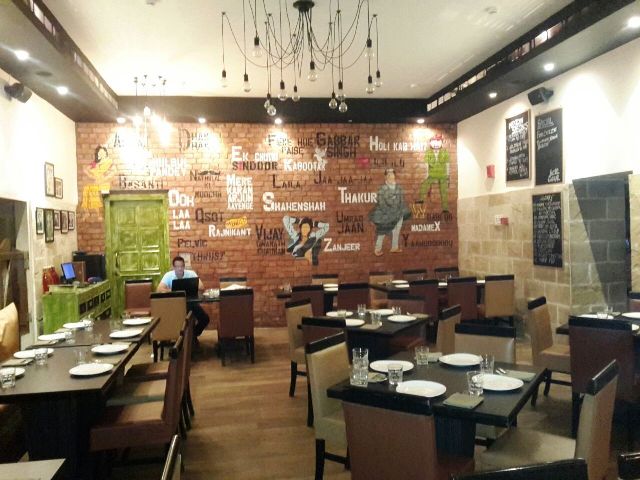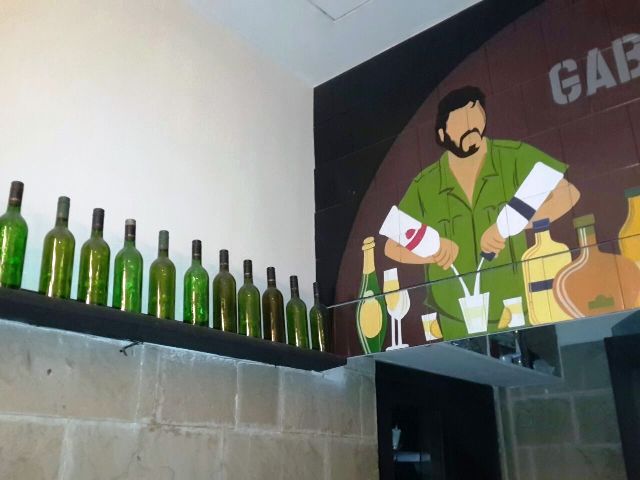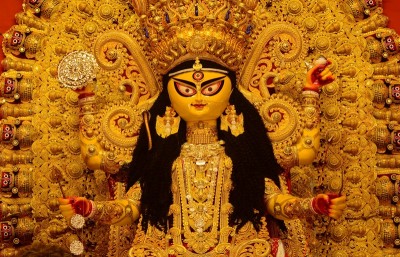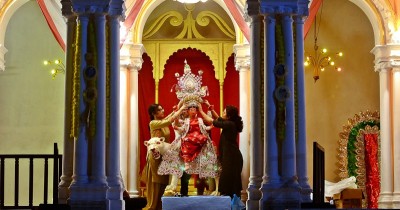
Gabbar Singh: The villain as hero

What’s it that keeps Gabbar Singh alive even today in the cinegoer’s mind? Gabbar, with all his evil-doings, exuded a kind of respect for the very villainy he lived for. He had neither taste nor time for women. Nor did we see him drinking. He chewed tobacco and spiked his three-liners with his unique tag, “kyon”? Veeru and Jai are characters we look back with love but Gabbar’s villainy is the template against which their ‘goodness’ shines.
What makes Gabbar’s popularity cross two generations? “Bearded, clad in army green and boots, talisman around his neck, a pistol in one hand, a whip in another, dacoit and gang lord Gabbar Singh was a man without conscience, remorse or mercy. No act was cruel enough to make him flinch - from playing Russian roulette with his own men to slicing off Thakur Baldev Singh’s arms. He was vile. He was awesome,” wrote Gitanjali Roy in an ode to Sholay on its 40th year.
Replete with one-liners, Sholay was packed with unforgettable dialogues. They were written in a hybrid of Hindi and Khariboli, a dialect spoken in West Uttar Pradesh. Khariboli, considered a more rustic version of Hindi, was later used in TV soap Hum Log. The unique blend used for Gabbar Singh’s spoken language and Amjad Khan's sinister delivery gave Hindi cinema’s ‘baddest’ guy some of the most killer lines, like Jo darr gaya, samjho mar gaya or, Tera kya hoga Kaalia?
.The Filmfare magazine named Gabbar Singh as the most iconic villain in the history of Indian cinema. His is acharacter without history. ‘I exist, therefore I am,’ Gabbar seems to say with every stride he makes, a sinister signature tune heralding his presence. His name and screen image have been used generously in advertising too. He appeared in the Britannia Glucon –D ad a funny take on the scene where his three henchmen returning from Ramgarh hand him a packet of biscuits! The commercial was known as Gabbar Ki Asli Pasand.

Amjad Khan’s career spanned nearly three decades including Satyajit Ray’s Shatranj Ke Khilari and Merchant-Ivory’s Perfect Murder. But he could never outlive Gabbar. He stole the thunder off legendary actors like Sanjeev Kumar and Amitabh Bachchan. The latter recalled how once when Khan, a close friend, came to his house, Abhishek, then a small boy, informed his father that Gabbar Singh had come. He had to be explained to that Gabbar Singh was only a character and the man who played it was Amjad Khan.
Amjad Khan stepped into the role through a twist of fate. Ramesh Sippy had penciled in Danny Denzongpa to play Gabbar but he backed out for want of dates. Javed Akhtar of the Salim-Javed duo writers did not approve of the new entrant because they did not like his voice. Amjad Khan proved everyone wrong.
Among the many remakes, there is a film named Pakistani Sholay starring Nasir Chinyoti. This was a badly made funny take on Gabbar Singh where the ‘comic’ makes you want to cry. But it proves that Sholay in general and Gabbar Singh in particular are greatly popular in Pakistan too.
Ajit Diwani directed Ramgarh ke Sholay (1991) a parody of the original. Amjad Khan played Gabbar Singh again. Quite beyond expectations, this film turned out to be a ‘sleeper’ hit. The Amitabh look-alike Vijay Saxena who played Jai, became a hit with this film. He earned the sobriquet Naqli Amitabh because of the uncanny resemblance. But we never had and never will have a naqli Gabbar.
The worst remake of Sholay is Ram Gopal Verma Ki Aag in which Amitabh Bachchan made the biggest blunder of his career by choosing to portray Gabbar named Babban in the film. After that marvelous performance in Cheeni Kum he seemed to write off his many outstanding performances with this film, projecting the worst possible celluloid distortion of Gabbar Singh.

In 2008, Ekta and Shobha Kapoor made a Bhojpuri tribute called Gabbar with the title role portrayed by the Bhojpuri super-hero Ravi Kishen while Jeetendra portrayed Thakur. The film was a thumping hit in Bihar, eastern Uttar Pradesh and Jharkhand where Bhojpuri is widely spoken. Director Mahesh Pandey emphasised that the film was a tribute to Gabbar Singh.
In 2015, Gabbar is Back portrayed a modern, urban and slick Gabbar portrayed by Akshay Kumar and the character was fleshed out as a crusader for the masses fighting against corruption at high levels mainly with action. But the film flopped. No one wanted a suave, handsome, slick and sophisticated Gabbar, especially as a positive hero.
In Nasreen Munni Kabir’s book Talking Films, Javed Akhtar says that there is “some Mexican blood in Gabbar. He is a bandit not a dakoo.” Gabbar was the first dacoit in Hindi films to wear jeans. Akhtar adds that Gabbar seemed to acquire a life and vocabulary of his own even as he as he wrote the film. The original film, set in rural India, depicts Gabbar as a safari-suited, tough-talking villain with immortal dialogues, rifle in hand and astride a horse. The remakes are distanced from this original character. Gabbar defies imitation, on screen or out of it.
Support Our Journalism
We cannot do without you.. your contribution supports unbiased journalism
IBNS is not driven by any ism- not wokeism, not racism, not skewed secularism, not hyper right-wing or left liberal ideals, nor by any hardline religious beliefs or hyper nationalism. We want to serve you good old objective news, as they are. We do not judge or preach. We let people decide for themselves. We only try to present factual and well-sourced news.







